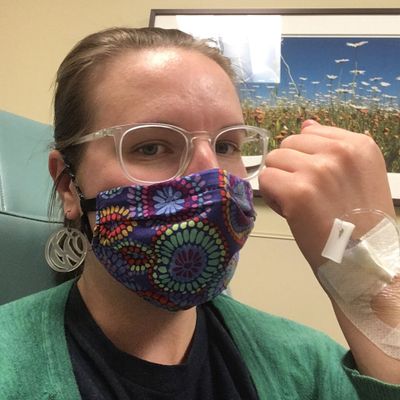More patients to have easy, free access to doctor’s notes

More U.S. patients will soon have free, electronic access to the notes their doctors write about them under a new federal requirement for transparency.
Many health systems are opening up records on Monday, the original deadline. At the last minute, federal health officials gave an extension until April because of the coronavirus pandemic.
Britta Bloomquist of Duluth, Minnesota, has been reading her clinical notes for years, first struggling through red tape and more recently clicking into a secure online patient website.
“It means information about your care can no longer be hidden from you. And you have a say in your care,” said Bloomquist, 32, who has a rare type of arthritis that took years to diagnose.
What’s changing?
Patients have long had a right to their medical records, including doctor notes, but obtaining them could mean filling out requests, waiting for a response and paying fees. A 2016 law said delays and barriers must be removed.
If you already use a patient portal such as MyChart to email your doctor or schedule an appointment, you might soon see new options allowing you to view your doctor’s notes and see your test results as soon as they are available. You might get an email explaining where to look, how to share access with a caregiver and how to keep other eyes off your information.
Many people won’t notice a change. About 15% of health care systems already are letting patients read doctor notes online without charge. That means about 53 million patients already have access to their doctor’s notes.
Will this help me?
Studies have shown that patients who read their notes understand more about their health, take their medications as prescribed more often and feel more in control of their care.
That’s true for Bloomquist. Diagnosed with a rare type of arthritis called ankylosing spondylitis, she had extensive surgery to straighten her right leg in 2018. She gets regular drug infusions and sees multiple specialists. It’s a lot to remember.
“I’ve become a health nerd,” Bloomquist said. “Reading the notes has kept me on the same page as my providers about what’s going on.”
Will I understand the jargon?
You may have to look up terms. Or ask you doctor to translate at your next visit. And doctor’s notes tend to use abbreviations. “SOB” means short of breath, by the way. “BS” can mean bowel sounds.
And brace yourself if your weight is an issue.
“I’m a heavy-set person, OK? And their favorite word to use is obese,” said Rosie Bartel, 71, of Chilton, Wisconsin. “You have to get used to that. Doctors use that word.”
To Bartel, who became more involved in her care after getting an infection in the hospital, reading notes means she’s doing what she can to prevent errors and stay healthy.
“I don’t have to remember everything said to me in a 15-minute appointment,” she said.
What if I spot an error?
Patients do find mistakes in their notes, and some errors are serious enough to affect their care, research has found.
“A clinician has eyes on thousands of notes, but a patient has eyes only on one, so it has powerful safety implications,” said Cait DesRoches, director of OpenNotes, a Boston-based group working for greater access to patient notes.
Bloomquist learned that it can be difficult to fix inaccuracies in her medical record. Some of her notes say her surgery was on her left leg. It was on her right leg. She said she reported the error several times, but it hasn’t been fixed yet.
Are there exceptions?
Psychotherapy notes don’t need to be shared with patients. And doctors can hold back a note if they think it will cause physical harm, such as a note about domestic violence if the abuser has access to the patient’s health information.
As for parent access to teenagers’ information, state laws vary, DesRoches said. That means some health systems allow parents to see at least some of their teenager’s notes, while others do not allow access.
Parents can check with their children’s doctors to find out how it works in their states.
What do doctors think?
Some doctors worry this will mean more phone calls from confused patients.
Dr. Marlene Millen of UC San Diego Health, which launched a pilot program for primary care patients in 2018, said that’s not her experience.
“I did not get a big bump in questions at all,” Millen said.
Many patients aren’t interested in their notes and never read them, she said. Others do and save her time because they arrive for appointments “and already know what the next step in the plan is because they had read the prior note.”
UC San Diego Health is opening notes to another 130,000 patients on Monday as more specialists are added. Millen, who’s been highly involved in the transition, said it’s frustrating the federal deadline was extended just last Thursday.
“We spend all this time getting ready, and we could have spent that time doing other things like working on the pandemic,” she said.